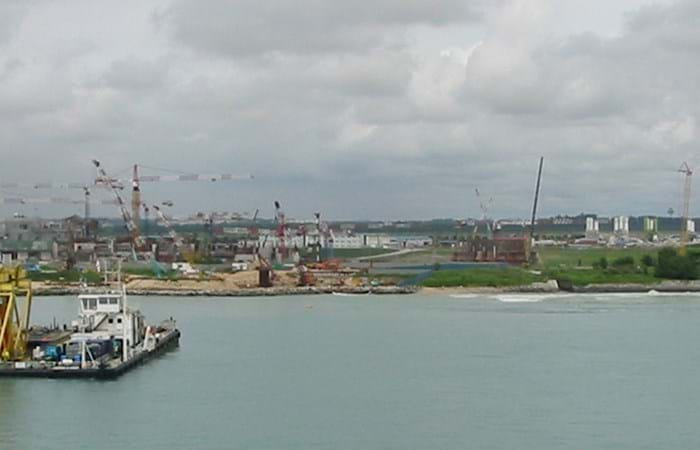The Public Utilities Board implemented the Deep Tunnel Sewerage System as a long-term solution to meet the needs for sewerage water collection, treatment and disposal to help maintain Singapore’s clean and healthy environment. In phase one of the Deep Tunnel Sewerage System, the Changi Water Reclamation Plant was constructed in the east of Singapore, from which the Changi Outfall was subsequently constructed. Treated effluent from the water treatment plant will flow through outfall pipelines and be discharged through series of diffusers, dispersing the effluent in the seawater. Boskalis International was awarded the contract for the Changi Outfall in 2002 and formed a joint venture with Archirodon to construct the project.
The Changi Outfall consists of two discharge pipelines, each five kilometers in length and a third pipeline of one kilometer in length for future extension. The pipelines consist of reinforced concrete pipes of which the largest pipes have an internal diameter of 3 meters, a length of 8.4 meters and weigh 105 tons. The land section of the outfall is 180 meters in length and is sloping from 8 to 16 meters in depth. An reinforced concrete slab on piles supports the pipelines. The marine section of the outfall is approximately 5 kilometers in length and reaches a water depth of 50 meters. The pipelines are situated directly next to each other in a trench, supported on a bedding of rock and backfilled with three layers of rock for protection against dragging and dropping anchors. Series of diffusers are located at the end of the two discharge pipelines and rise above the existing seabed at a water depth of 40 meters. The diffusers are protected by reinforced concrete structures. The main components of the project were:
- Manufacture of the concrete elements;
- Construction of the land section;
- Construction of the marine section, where the purpose build Installation Pontoon ‘Arta’ was used for the concrete elements.
